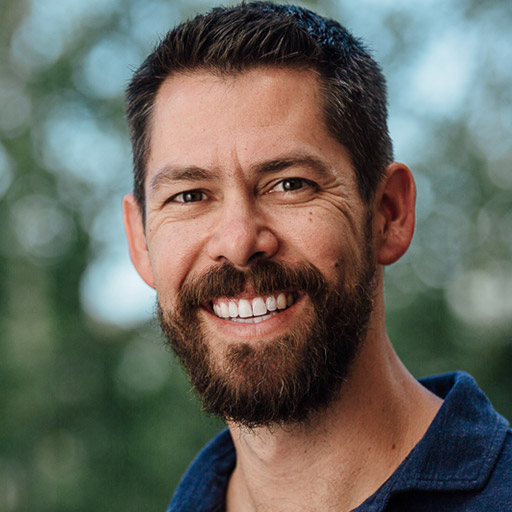Episode Transcript
Richard: What change management model do you like? Is it Kotter? ADKAR? Maybe some of the more complexity forward models, like Human Systems Dynamics, Estuarine Mapping, the Satir model?
Peter: All of those have some good things to offer, but I've found that when I'm trying to lead change at work, or even encourage change at home, it's not so useful to think of change as a thing that I manage.
It feels almost naive to think If I just manage this the right way, everything will go how I want it to. When I'm thinking that way, any resistance to my desire to change is an obstacle to be overcome. And that places the person presenting that resistance in an adversarial relationship with me. Instead, I want to partner with people on change.
And not only does that tend to lead to better outcomes on the thing I'm trying to change, but it becomes a joyful, creative, collaborative process. And that's what I love most about work.
Richard: So in today's episode, we'll share the practical tool we use to shift us from adversarial resistance to joyful collaboration.
But before we go there, a quick reminder that this show is a free resource sponsored by the Humanizing Work Company, where we help organizations level up their leadership, product management, and collaboration. Visit the contact page on our website, humanizingwork. com, and schedule a conversation with us if your organization wants to see stronger results in those areas.
Peter: And if you want to support the show, the best thing you can do if you're watching on YouTube is subscribe, like the episode, and click the bell icon to get notified of new episodes. Drop us a comment with your thoughts on today's topic. And if you're listening to the podcast, a five star review makes a big difference in whether other people find it or not.
Richard: We've talked about Eli Goldratt's levels of resistance model before on the show, and it's something we use pretty regularly with clients. Check out episode 130 for a more complete overview. For today, we're going to focus mostly on levels 1 and 3, since that's where most resistance shows up. A quick recap of the five levels of resistance will help set the stage, though.
When I suggest a change, and get some pushback on it, that resistance can be categorized into one of five levels. If I'm seeing resistance at a lower level, there's no point in moving on to one of the higher levels. So this helps me make sense in my mind of what I'm hearing so I can engage with it in a useful way.
Another way we can think about this model is levels of alignment. I need to get alignment at level 1 before moving on to level 2, etc.
Peter: Right, and level 1 is resistance about the nature or extent of the problem we're trying to solve. If we agree about the problem, we can talk about level 2, the solution. Do we agree that the proposed solution will address the problem from level 1?
If we agree about that, then we get to level 3, where the solution will fix the problem. But it has some negative side effects, and we can't move past that unless we agree that the side effects can be mitigated sufficiently to make the solution to the problem better than the current state. Resistance at levels 1 through 3 sounds like, we just shouldn't do it.
Levels 4 and 5 switch to, we should do it, but it'll be hard or even impossible to make that change happen. Level 4 is that there are obstacles to implementation, which are usually about having enough time or enough budget to do the thing. And finally, at level 5, this is doubt about the collaboration of others.
And that's usually in one of two forms. Doubt that we can get permission from somebody, or doubt that another group or team will be on board with helping us with the problem.
Richard: So, I mentioned that most resistance comes at levels 1 or 3. Level 1, people don't agree that the problem is worth solving, or level 3, they think it's worth solving and your proposal will solve it, but along the way it will cause serious negative side effects.
Level 1 resistance usually comes in one of two forms. It's either lack of awareness about the problem, I shouldn't see it, or I see it, but it looks like somebody else's issue. If you don't see why a problem matters, resistance is appropriate. They shouldn't care about your problem just because you do. So the keys here are clarity, helping them see the impact of the problem, and care.
Showing that you genuinely value their perspective, especially if they experience the problem differently than you do. If fixing your problem just shifts the pain to them, which is common in organizational changes, the benefits go one way, and the costs go another way. And if that happens, that's not fair.
So instead, look for shared stakes, reasons that they'd want to solve the problem too.
Peter: And that's really the human centric part of the approach here. If I want to remove some pain from my life, But removing it shifts that pain to you. It's not fair for me to ask you to take on that pain unless we have a very trusting reciprocal relationship.
Like, I'd do that for my wife, but maybe not for a co worker or another team that I don't know very well.
Richard: Once there's alignment on the problem, now you can move on to talking about the solution. And in today's episode, we're going to hop right over. That solution level level two will assume, as is often the case, that you've thought enough about your solution, that it actually does solve the problem.
And if that's true, then the resistance really kicks in at level three: side effects.
Peter: As we discussed in episode 130, this is where we actively seek out skeptics and invite them to collaborate on identifying those potential side effects And then we ask those skeptics, how might you solve that? What approach might you take?
Richard: Changing the framing of the discussion from reasons we shouldn't change to interesting problems to solve has this magical effect on a conversation when it's done well. That's because there's real joy in solving a tricky problem. And when you get two or more smart people collaborating on solving a tricky problem, especially when solving it will create some positive impact in the world, that's my favorite thing to do at work.
It's joyful.
Peter: Yeah, we had this experience just this week, we were working with a marketing team on some changes to their org structure. The problem was clear. Marketing, as anybody is aware, is changing pretty rapidly with the advent of AI tools. And this department needed to make some big shifts to generate more content much faster without losing the quality that they'd been known for.
So they were removing some layers of approval and creating more self contained, empowered teams with some clear remits.
Richard: It was clear how that reorg, along with some other new tools they were adopting, could solve the problem. But then, of course, we hit the level three objections. Those people in the creative roles used to work on three other projects at the same time.
Now they're dedicated to one focus area. If they're working autonomously, how do we maintain a sense of brand unity? Won't those creatives get burned out working on the same topic area over time?
Peter: So we captured each of those concerns and treated them like problems to solve. How could we redistribute the projects in the new team structure?
What might some of the benefits be of that new distribution? What are some things we could put in place to keep the brand unity strong? What if we did a show and tell every month, almost like an art show? What about a Menlo Innovation style rapid stand up where everyone in the department takes 30 seconds to share what problem they tackled yesterday and what they're moving on to today?
What if they created a Slack channel to share cool content that they're proud of? Could a community of practice help? How could we help the creatives not get burned out? What if we rotated them but did a two week transition where they paired with a new person? What about a self designed team session once a quarter where people could move, but they don't have to?
Richard: That conversation was full of energy, excitement, and possibility. It had what creativity researchers called burstiness, where people were jumping in with suggestions, like interrupting, picking up other people's thoughts. It was creative, it was collaborative, and it resulted in some strong possible next steps.
Most importantly, it didn't feel like wrestling with resistance at all. It felt joyful, fun, felt like a real team working together to solve an important problem.
Peter: So if your change management approach is feeling like the opposite of that, like a bureaucratic checklist that meets resistance at every turn, reframe it through the lens of creating five layers of alignment.
Then when you encounter resistance, treat each objection like a puzzle to solve together. You might find that what starts as pushback turns into some of the best ideas.
Richard: We've mostly illustrated this with a side effect or a level three example here, because that's where most of the resistance is most of the time, but you can bring this collaborative frame into resistance at every level.
So running into disagreement about the nature or extent of the problem, ask other people what they see that might be different from what you see. Explore how you might generate more information together about what's going on with the problem. If your solution's not landing, invite other people to make it stronger.
How else might we address this problem that we've agreed on? If you're getting level 4 objections about obstacles to implementation, brainstorm widely and divergently about the resources that you collectively have to bring to bear on problems that matter. Getting level 5 doubt about the collaboration of others?
You have a couple collaborative options. You can bring those collaborators outside the room into the conversation, or you can get creative with your current partners about how to experiment in smaller, safer ways that don't require broad support yet. Every objection is an offer of collaboration. If you receive it and engage with it that way.
Peter: If you've had a great experience with this kind of collaborative problem solving, we'd love to hear about it.
Let us know in the comments or send us a message. And if you want help leading meaningful change in your organization, visit humanizingwork.com to start a conversation. Thanks for tuning in and we'll see you next time.




